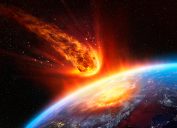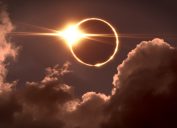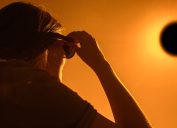Explosive "Devil Comet" Could Photobomb the Solar Eclipse—How to See It
Experts say 12P/Pons-Brooks's perfectly timed visit could be visible to the naked eye.
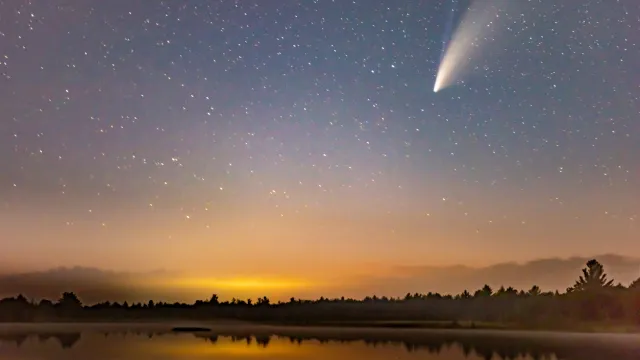
Next month, tens of millions of people across North America will be treated to an extraordinary sight when a total solar eclipse becomes visible for much of the continent. Many are making it a point to get someplace where they can get a good view—especially as it's the last time one will be visible in the U.S. until 2044. But even though it's undoubtedly a special occasion itself, the moon passing in front of the sun won't be the only reason to look up on April 8. Read on for more about the explosive "devil comet" that could photobomb the solar eclipse and how you can be sure to see it.
RELATED: Emergency Officials Issue Safety Alert Ahead of Solar Eclipse: "Prepare Yourself."
Comet 12P has earned itself a nickname due to its unique appearance.
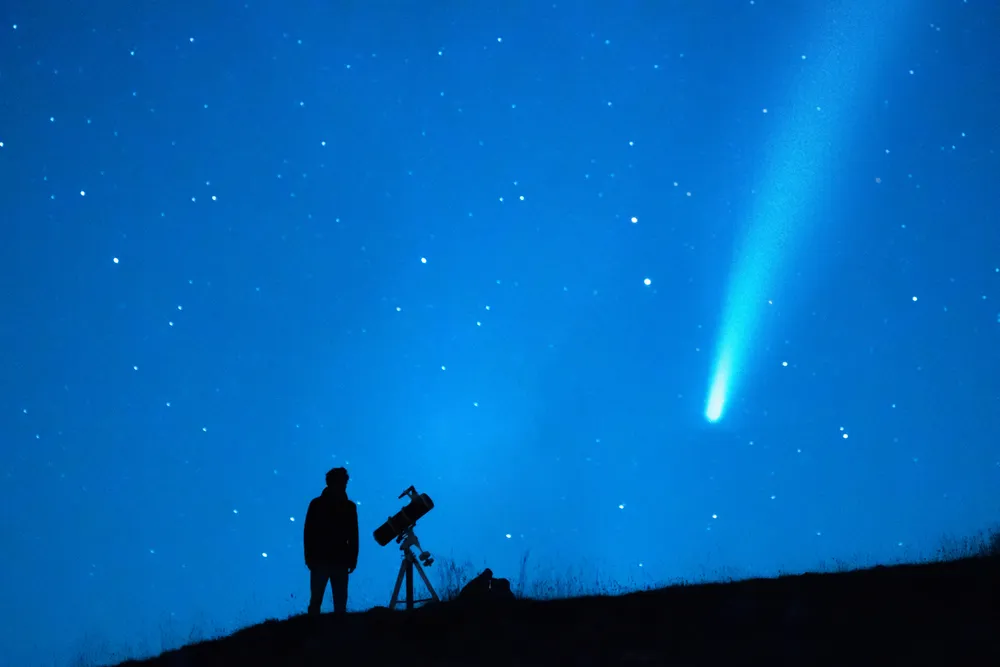
Whether you're a casual astronomer or not, you're certainly familiar with comets. The celestial objects are typically made of rock and ice left over from the solar system's formation, per NASA. When they begin to warm up as they approach the sun, the comets sprout a glowing head and long streaming tails—which can put on a dazzling display for us here on Earth.
But while comets vary in color, size, and brightness, one passing visitor in particular has been grabbing headlines recently. Comet 12P/Pons-Brooks has earned the nickname "devil comet" due to developing what look like horns on its coma—or bright head—on its approach to the sun last year, Live Science reports.
In this case, the spooky appearance is because 12P is an ice volcano comet, spewing forth an eruption of gas and ice crystals as the sun's radiation makes its nucleus crack. The 10.5-mile-wide object circles the sun once every 71 years, and it showcased its first eruption in nearly seven decades last summer, per Live Science.
The object's nickname may not stick around much longer, though, as its "horns" haven't appeared in any subsequent eruptions. But the comet might still be quite the spectacle for other reasons.
RELATED: Here's How Much of the Total Solar Eclipse You Can See in Your Region.
The comet's latest visit will nearly coincide with the total solar eclipse.
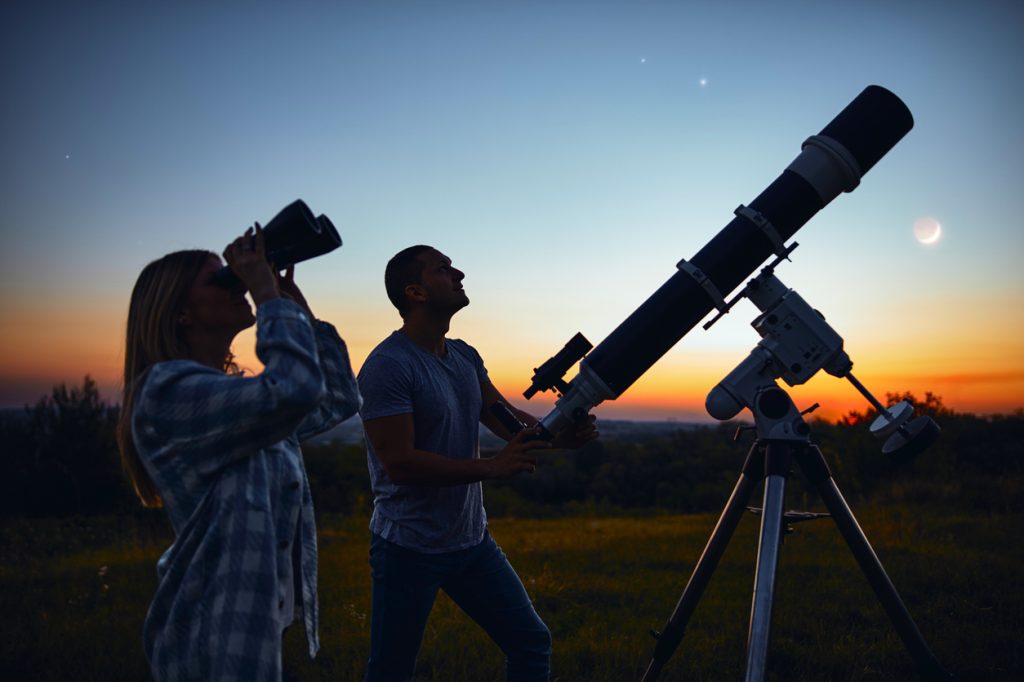
While the total solar eclipse might be more than enough of a spectacle for most viewers, there might be an unexpected bonus during the event. That's because Comet 12P is still making its way towards the center of the solar system and is expected to reach its closest point to the sun on April 21, per Live Science.
This means the comet will appear much brighter on April 8, when the eclipse occurs. It will also be within 25 degrees of the sun, which is about the width of two and a half clenched fists held up to the sky, according to Scientific American.
RELATED: What Really Happens to Your Eyes If You Look Directly at a Solar Eclipse.
Some experts expect the comet could be visible with the naked eye.
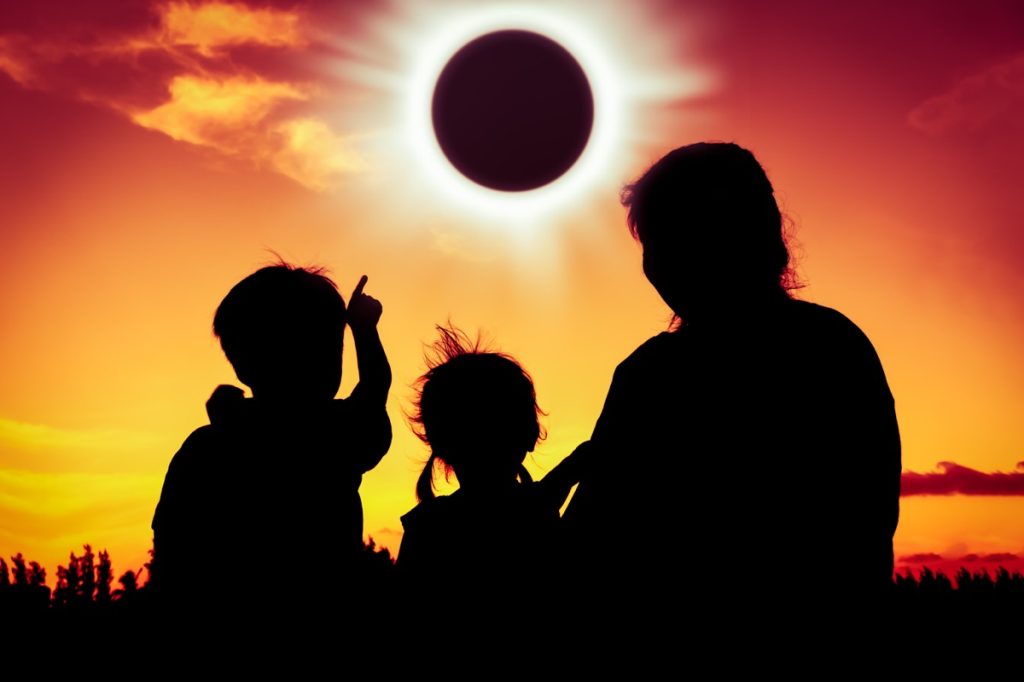
The close proximity during the eclipse has some photographers anticipating that they'll be able to grab a once-in-a-lifetime photo. However, some experts believe the show-stealing comet could appear visible to the naked eye during the big event.
"This is one of the brightest comets in history," Rosita Kokotanekova, a planetary scientist at the Institute of Astronomy and National Astronomical Observatory at the Bulgarian Academy of Sciences, told Scientific American.
Based on current estimates, the comet's normal appearance could be just barely bright enough to catch on its own or easily spotted with a pair of binoculars. But things could change if another eruption takes place in the run-up to April 8.
"It has had some spectacular outbursts," says Kokotanekova. "It's a very unknown territory. That's why we're interested in every comet that does this."
Here's how you might be able to spot "devil comet" 12P during the eclipse.
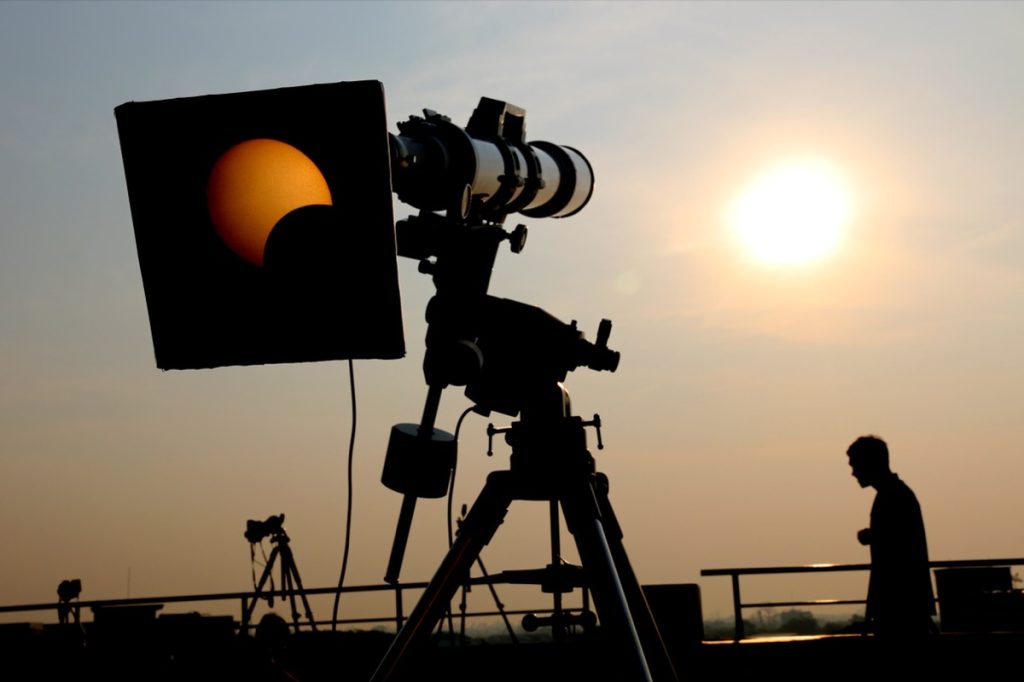
While the possibility of a two-for-one experience is enticing, experts are still cautioning that it's far from certain that it will be as easy to catch sight of both on the big day.
"I don't want people to get disappointed if they don't see the comet," Kokotanekova told Scientific American. "If people expect to see something extremely bright on a fully dark sky, I think that unless we're very lucky with an outburst, it will be more challenging than that."
However, there are still a few things to keep in mind if a last-minute eruption makes Comet 12P more visible. As with any eclipse viewing, it's essential to have certified solar glasses to protect your eyes during the experience, as regular sunglasses won't suffice, per Live Science. Those using binoculars or a telescope to enhance their view should also make sure they're using the appropriate filters or purchase a pair made for solar viewing.
But even if the comet isn't as bright as hoped, there's still a potential upside. That's because the eclipse is taking place during a solar maximum, meaning wisps of the sun's atmosphere could be especially visible during totality, according to Live Science.
- Source: NASA: Comets
